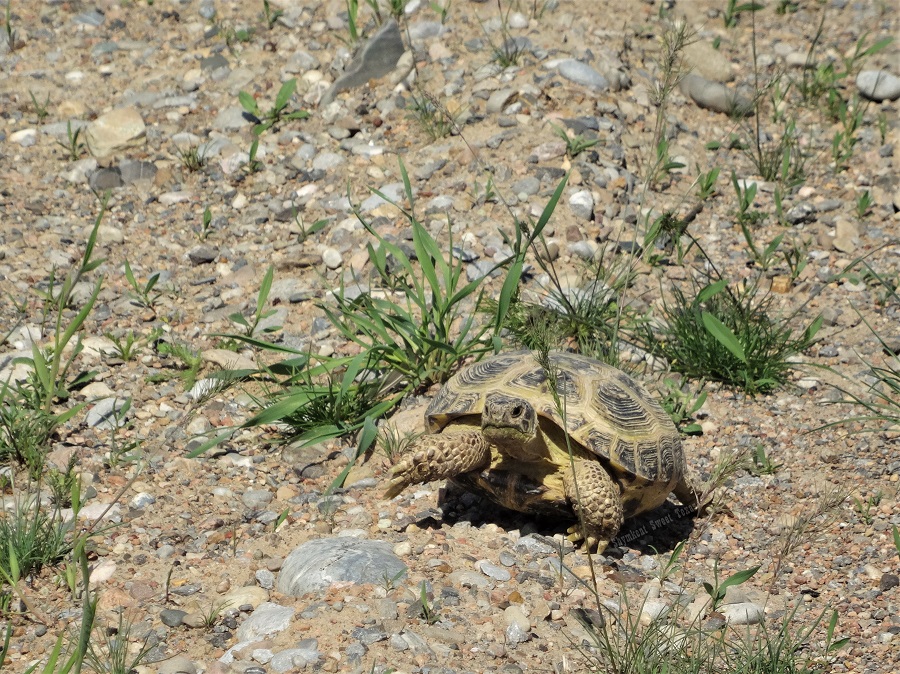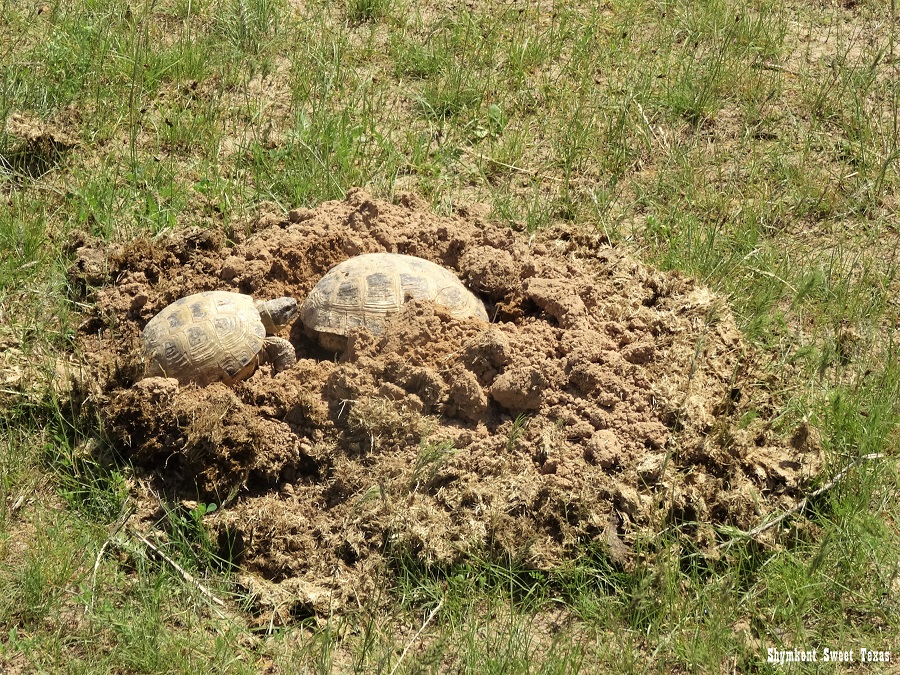The Horsfield’s tortoise, or Russian tortoise (Agrionemys horsfieldii) is a small turtle of Central Asia, which can be met in the southern half of Kazakhstan, and even in some parks of Shymkent.
The Horsfield’s tortoise lives in Central Asia arid and desert areas. It’s very active in spring, during which it can be seen in large quantities in steppes and desert of South Kazakhstan. It’s a discreet and solitary animal, herbivore with opportunistic tendencies. It’s 15-20 cm long, and lives 50-60 years.
The Russian tortoise uses to dig burrows in which to bury itself during the great cold of winter and great heat of summer. When rains come back in falls, the turtle leaves its summer burrow and eats until the first cold. Hatchlings emerge at this period, but, if the weather is too cold, they will remain buried in the nest until the following spring.
Horsfield’s tortoises are threatened with extinction by the pollution and destruction of their natural habitat, but also by cars that crush them when they cross roads, and because of human captures.
Tortoises are wild animals that have their own life in their natural environment: if you meet one of them, don’t catch it!
Anecdote: the Central Asian tortoise was the first tortoise to be send to space by Russians in 1968.
Photo: Gaëlle Bal
On the same topic: The yellow ground squirrel, or yellow souslik









